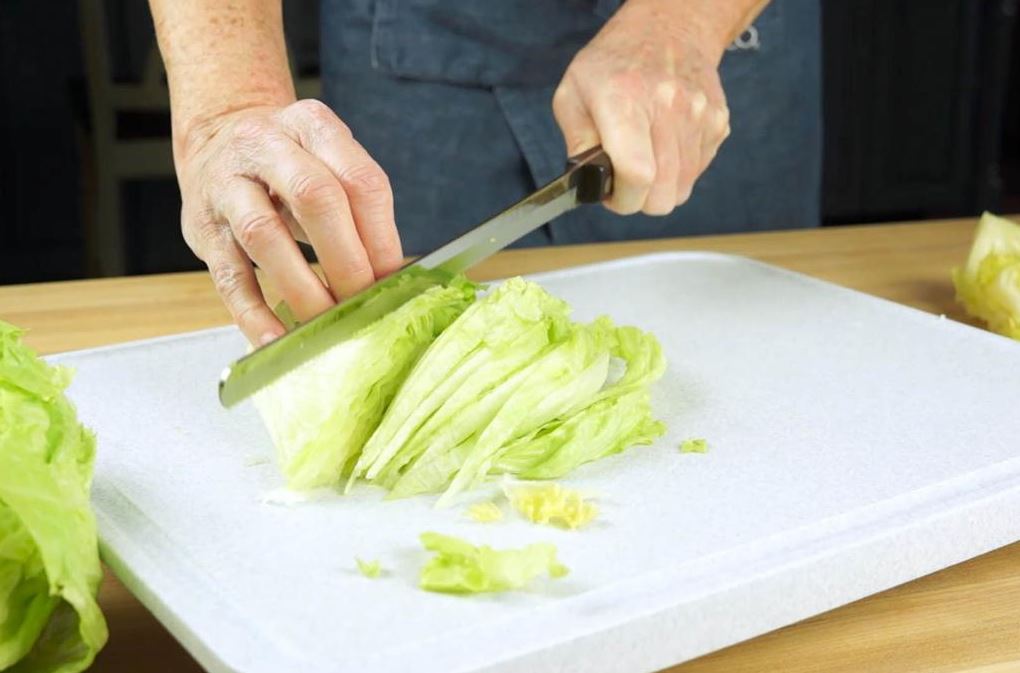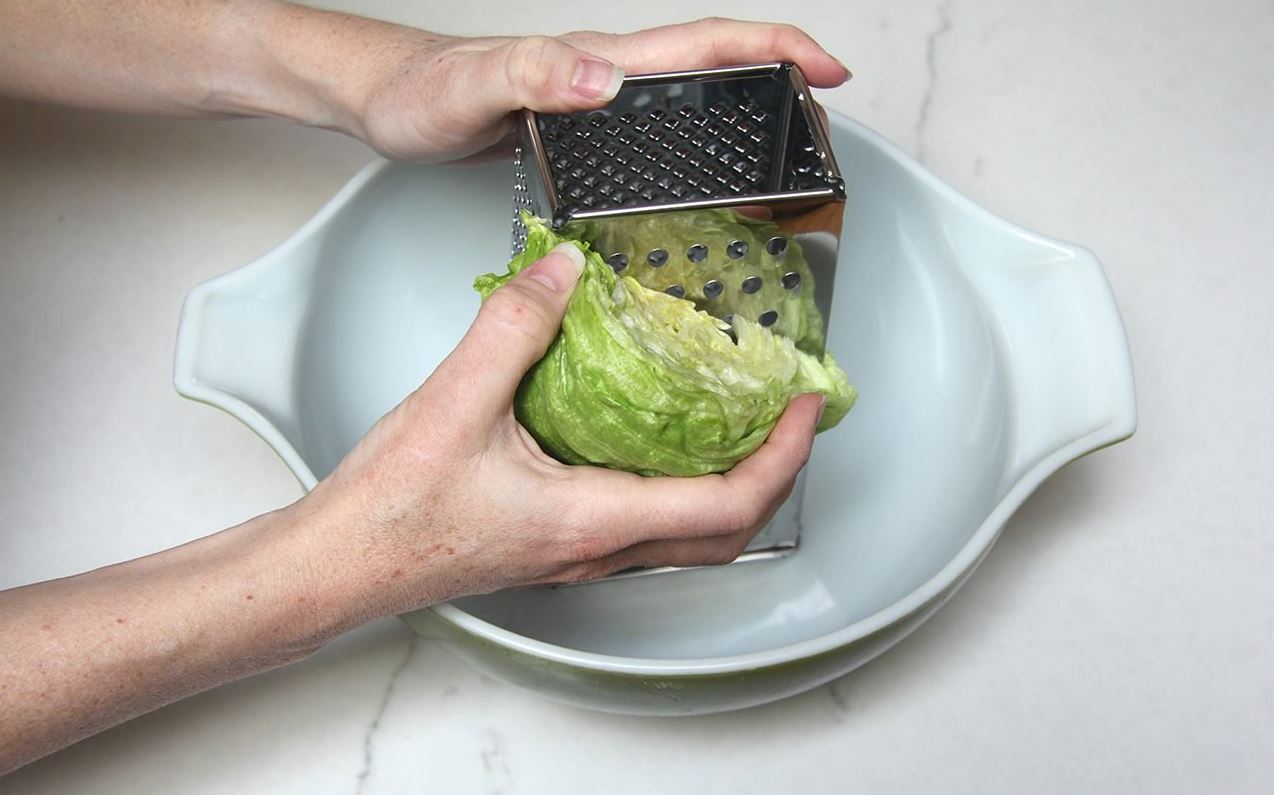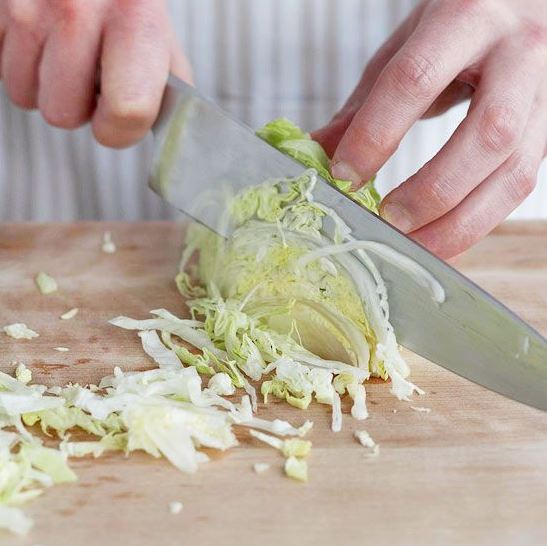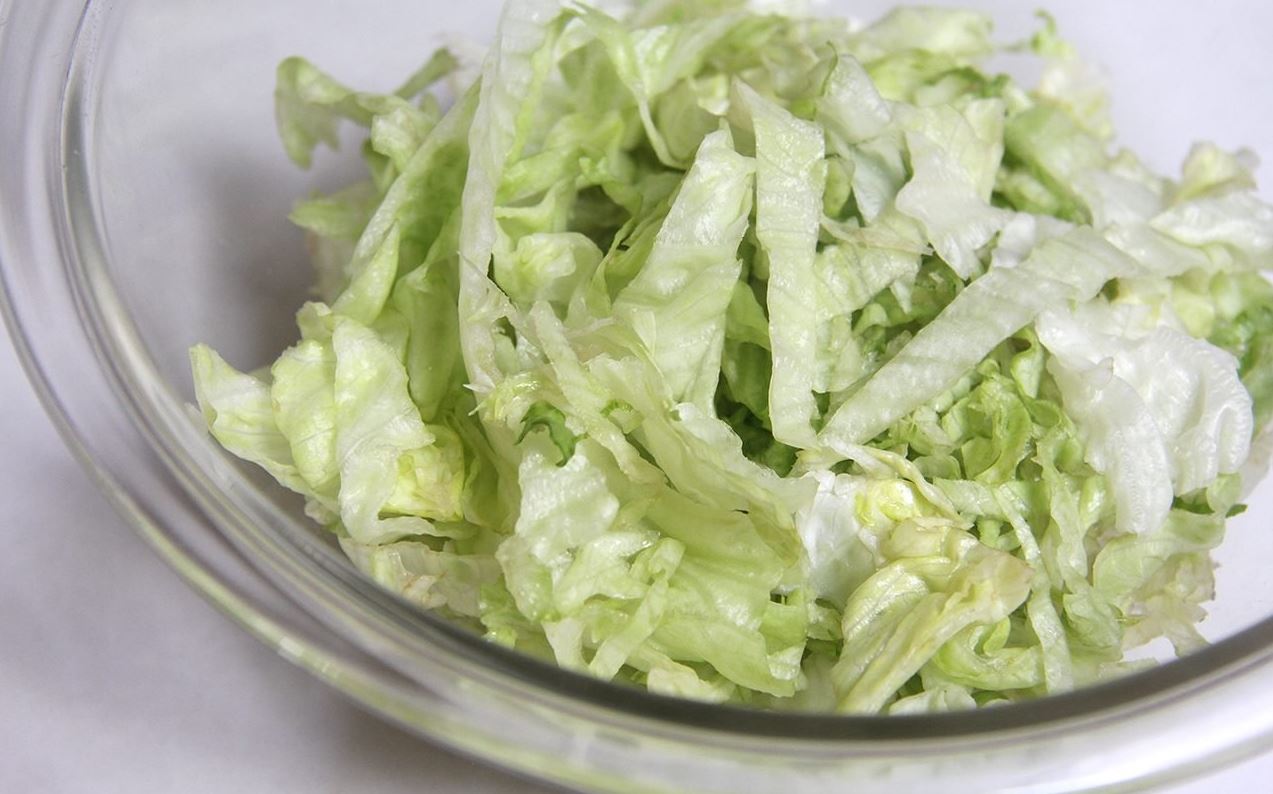Perfecting Lettuce Shreds A Comprehensive Guide to Shredding
Lettuce Shreds might seem like a simple task, yet it plays a crucial role in the culinary world, particularly when crafting salads, sandwiches, and garnishes. The texture and size of lettuce can profoundly affect the overall eating experience, enhancing the dish’s visual appeal and ensuring even distribution of dressings and flavors. However, achieving the perfect shred is not as straightforward as it might appear.
Many home cooks might reach for a box grater when attempting to shred lettuce, a common kitchen tool for other vegetables. Unfortunately, this method is less effective with lettuce, often leading to bruised leaves that rapidly lose their crispness and vibrant color. The grater’s sharp edges can damage the delicate leaves, causing them to wilt and release moisture prematurely, which can make your salad soggy instead of crisp.
Alternatively, pre-shredded, bagged lettuce offers convenience, available at most grocery stores. While this option saves time, it comes with drawbacks. The industrial process of shredding and bagging often involves preservatives to extend the lettuce’s shelf life, which can impart an unusual odor and an off-putting taste that detracts from the fresh, clean flavor one expects from lettuce. Moreover, once the bag is opened, the lettuce tends to deteriorate much faster than its whole counterparts.
Given these challenges, learning to shred lettuce manually using the right technique not only preserves the texture and freshness of the leaves but also enhances your dishes. This guide will walk you through an easy method to shred lettuce efficiently at home, ensuring you get the best results without specialized tools or unnecessary hassle.
| Method | Description | Pros | Cons |
|---|---|---|---|
| Using a Box Grater | Commonly used kitchen tool for shredding vegetables. | Familiar and readily available in most kitchens. | Not ideal for lettuce; can bruise leaves, causing them to lose crispness and become soggy quickly. |
| Pre-shredded, Bagged Lettuce | Convenient, pre-shredded and available in grocery stores. | Saves time and effort in meal preparation. | Often contains preservatives, can have an unusual odor and taste; deteriorates faster once opened. |
| Manual Shredding Technique | Method to manually shred lettuce using a knife. | Preserves the texture and freshness of the lettuce; enhances the appearance and flavor of dishes. | Requires a bit more time and technique compared to using pre-shredded options. |
Contents
Video Tutorial
To truly master the technique of shredding lettuce, a visual demonstration can be incredibly helpful. While this text does not include an embeddable video, you can easily find detailed tutorials online that show the shredding process step-by-step. Platforms like YouTube have numerous chefs and cooking enthusiasts who share their tips and tricks for preparing lettuce perfectly every time.

Search for “how to shred lettuce” to find a video that demonstrates the precise movements and techniques discussed here. Watching a professional or experienced home cook in action can provide additional nuances that text alone might not convey, such as the exact way to hold your knife and the amount of pressure to apply while cutting.
| Resource Type | Description | Platform | Search Tips |
|---|---|---|---|
| Video Tutorials | Detailed step-by-step demonstrations on how to shred lettuce by chefs and cooking enthusiasts. | YouTube | Use search terms like “how to shred lettuce” to find videos showing precise movements and techniques. |
Necessary Tools
The beauty of shredding lettuce lies in the simplicity of the tools required. You don’t need fancy gadgets or a multitude of kitchen utensils to achieve perfect, restaurant-quality shredded lettuce at home. Here’s a breakdown of the essential tools needed:
The key tool for shredding lettuce is a sharp chef’s knife. The sharpness of the knife is crucial as it ensures clean cuts without bruising or damaging the leaves. A dull knife might tear the lettuce, leading to premature wilting and loss of moisture. An ideal knife should have a blade that’s about 8 to 10 inches long, which allows you to make large, sweeping cuts that are ideal for shredding.
A sturdy cutting board provides a safe and stable surface for cutting. There are various types of cutting boards available, but wooden or plastic boards are preferred when working with lettuce. Wooden boards tend to be gentler on knives and are durable. However, plastic boards are easier to clean and can be sanitized in the dishwasher. Whichever type you choose, ensure it’s large enough to comfortably fit a whole head of lettuce and provides ample room for you to work.

Although not absolutely necessary, a non-slip mat or a damp paper towel placed under your cutting board can improve safety. This setup prevents the board from sliding around on your countertop, allowing for more precise and controlled cuts. Safety in the kitchen is paramount, and ensuring your cutting board is stable can help prevent accidents.
By using just these simple tools, you can achieve beautifully shredded lettuce that’s perfect for any dish. Whether you’re making a light salad, preparing toppings for burgers, or assembling wraps, having freshly shredded lettuce can elevate your meal. With a sharp knife and a steady cutting board, you can turn a humble head of lettuce into a culinary delight, enhancing not just the flavor and texture of your dishes but also their presentation.
| Tool | Description | Importance |
|---|---|---|
| Sharp Chef’s Knife | A blade 8 to 10 inches long for large, sweeping cuts. | Ensures clean cuts without bruising or damaging the lettuce, preventing wilting and moisture loss. |
| Cutting Board | Sturdy, preferably wooden or plastic, providing a safe and stable surface for cutting. | Wooden boards are durable and gentle on knives, while plastic boards offer ease of cleaning and can be sanitized. |
| Non-slip Mat or Damp Paper Towel | Placed under the cutting board to prevent it from sliding. | Enhances safety by stabilizing the cutting board, allowing for precise and controlled cuts. |
Step-by-Step Guide to Shredding Lettuce
Shredding lettuce properly can elevate the quality of your meals, whether it’s adding the perfect touch to a taco night or enriching the texture of a gourmet salad. Here’s a comprehensive guide to shredding lettuce, ensuring you get great results every time with just a few simple steps.
Step 1: Prepare Your Workstation
Before you begin, it’s essential to prepare your workstation to ensure safety and efficiency. Place your cutting board on a flat surface. To prevent the board from slipping while you chop, place a non-slip mat or a damp paper towel underneath it. This setup not only enhances safety but also makes the cutting process smoother, allowing for more precise cuts.

Step 2: Remove the Core
The core of the iceberg lettuce is more bitter and less tender than the leaves and can detract from the texture of your dish. To remove it:
- Position the Lettuce: Place the head of lettuce on the cutting board with the stem facing up.
- Cut the Core: Use a paring knife to make a circular cut around the core. Insert the knife at a slight angle towards the center of the head, just outside the core.
- Remove the Core: Once you’ve cut around it, use your fingers to pull the core out. This should leave a conical hole at the bottom of the lettuce head, with the leaves now loose and easier to separate.
If available, utilize a video or image tutorial to visually demonstrate this technique, which can help in understanding the precise angle and depth of the cut needed.
Step 3: Cut the Head in Half
With the core removed, the next step is to halve the head of lettuce:
- Position the Lettuce: Place the head core-side-down on the cutting board for stability.
- Halve the Lettuce: Using a sharp chef’s knife, slice the lettuce head down the middle into two equal halves. This exposes the layers of leaves, making them more accessible for shredding.
Including a photo of the halved lettuce can help illustrate how it should look at this stage, ensuring that those following the guide can match their progress visually.
Step 4: Shred the Lettuce
Now, it’s time to shred:
- Thin Slices: Take one half of the lettuce and place it cut-side down on the board. Slice it into thin strips, aiming for the thickness of about a pencil. The thinner the slices, the finer the shred.
- Adjust Length: Depending on your preference for shred length, you can modify how you slice the lettuce:
- For longer shreds, slice from the top to the bottom of the leaf.
- For shorter shreds, turn the lettuce and slice across the shorter width.
- Repeat: Repeat with the other half of the lettuce.
Visual aids showing different slicing techniques and the resulting shred lengths can be incredibly helpful here, allowing readers to see the effect each method has on the final product.
An average-sized head of iceberg lettuce typically yields about 8 cups of shredded lettuce. This quantity is perfect for several servings, whether as a base for salads or as an addition to sandwiches and wraps.
Understanding how much lettuce each head yields helps in meal planning and ensures you prepare the right amount for your needs, avoiding waste.
By following these steps, you’ll be able to shred lettuce quickly and efficiently, enhancing the texture and presentation of your dishes. This guide provides the techniques necessary for any home cook to prepare lettuce like a pro, making your salads and other dishes stand out with minimal effort.
| Step | Action | Details | Visual Aids |
|---|---|---|---|
| 1. Prepare Your Workstation | Set up cutting board with stability. | Place a non-slip mat or damp paper towel under the cutting board to prevent slipping and enhance safety. | Image of setup could be helpful. |
| 2. Remove the Core | Use a paring knife to remove the core of the lettuce. | Make a circular cut around the core at a slight angle, then pull the core out with fingers, leaving a conical hole. | Video or image tutorial showing the angle and technique. |
| 3. Cut the Head in Half | Stabilize and slice the lettuce head into two halves. | Position the head core-side-down for stability and slice down the middle to expose layers for easier shredding. | Photo of the halved lettuce to guide visual expectation. |
| 4. Shred the Lettuce | Slice the lettuce into thin strips. | Position lettuce cut-side down, and slice into thin strips, adjusting the length as preferred for either longer or shorter shreds. | Visuals showing different slicing techniques and shred lengths. |
Storage Tips
Maintaining the freshness of shredded lettuce is crucial for preserving its crisp texture and vibrant color. Proper storage not only extends the shelf life of your lettuce but also ensures it remains appetizing and nutritious for your meals. Here are the best practices for storing shredded lettuce effectively:
Dry the Lettuce: After shredding, ensure the lettuce is as dry as possible. Excess moisture can speed up the decay process. You can use a salad spinner or gently pat the lettuce dry with clean kitchen towels.
Airtight Container: Transfer the shredded lettuce into an airtight container. Removing as much air as possible before sealing the container helps in reducing oxidation and moisture buildup.

Refrigerate: Store the sealed container in the crisper drawer of your refrigerator. This environment is ideal for maintaining the freshness of leafy greens.
Prepare the Bag: Use a breathable produce bag, preferably one designed for storing vegetables. Place a few damp paper towels at the bottom of the bag. The moisture from the towels will help maintain the right humidity levels around the lettuce.
Add Lettuce: Place the shredded lettuce on top of the damp paper towels and gently close the bag, allowing for some air circulation.
Store in the Fridge: Keep the bag in a cooler part of the refrigerator, such as the vegetable drawer, to maximize freshness.
For lettuce heads that have been partially used but not fully shredded, follow these steps to manage and store them:
Wrap in Damp Paper Towel: Wrap the unshredded portion of the lettuce head in a slightly damp paper towel. This keeps the lettuce hydrated without making it too wet.
Plastic Bag Storage: Place the wrapped lettuce in a plastic bag, but do not seal it tightly. Allowing for some airflow prevents excess moisture accumulation, which can lead to rot.
Refrigerate and Monitor: Store in the refrigerator and check periodically. Replace the damp paper towel if it becomes too wet or dry, and use the lettuce within a few days.
Rustiness or browning is a common problem with stored lettuce, caused by exposure to air and moisture. To minimize this issue:
Limit Exposure to Air: Store shredded lettuce in airtight conditions as much as possible.
Keep it Dry: Ensure the lettuce is dry before storing; excess moisture can accelerate spoilage and rustiness.
Use Quickly: Shredded lettuce is best used within a few days, as it tends to deteriorate faster than whole lettuce heads.
| Storage Step | Technique | Details |
|---|---|---|
| 1. Dry the Lettuce | Use a salad spinner or clean kitchen towels | Remove excess moisture to slow down decay. |
| 2. Airtight Container Storage | Place in an airtight container | Remove as much air as possible to reduce oxidation and moisture buildup. |
| 3. Refrigeration | Store in the refrigerator’s crisper drawer | Ideal environment for maintaining freshness. |
| Alternative Method: Breathable Bag | Use a breathable produce bag with damp paper towels | Maintain humidity levels around the lettuce for optimal freshness. |
| Partial Head Storage | Wrap in a damp paper towel and store in a loose plastic bag | Keeps the lettuce hydrated without excessive moisture. |
| Minimizing Browning | Limit air exposure and keep dry | Store in airtight conditions and ensure lettuce is dry to prevent rustiness and browning. |
Lettuce Shreds your own lettuce at home is a straightforward process that can significantly enhance the quality of your meals. With the right techniques, you can achieve perfectly shredded lettuce that is both visually appealing and delicious. By following the storage tips provided, you can ensure that your lettuce remains fresh and crisp for several days, allowing you to enjoy healthy, vibrant salads and toppings at your convenience.
I encourage you to try Lettuce Shreds yourself and experience the difference it makes in your cooking. Remember to refer to the video tutorial for a clear demonstration of the techniques discussed. With a little practice, you’ll find that preparing and storing your own shredded lettuce is not only easy but also a rewarding addition to your culinary skills.
Lettuce -Avoiding Lettuce Shortage with Indoor Gardening Techniques
Ultimate Guide to Lettuce Buttercrunch Cultivation and Care
Lettuce Boston From Cultivation to Cuisine
Succession Planting & Season Extension for Head Lettuce
Delicious Keto Hamburger Lettuce Wraps A Low-Carb Delight
Crafting the Perfect Little Gem Lettuce Salad with Beets
Cos Lettuce Cultivation and Food Safety Concerns
